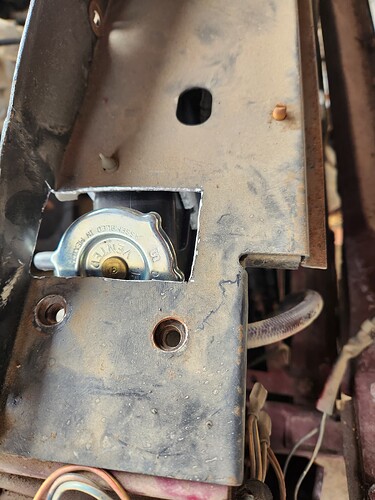Life is funny and amazing at the same time.
While driving during one of the rare rain storms in Southern California I hydroplaned on the freeway and slammed into the concrete center divide - no other vehicles were involved!!! I walked away without a bruise or a scratch…but my daily driver Ford Focus was totaled. BTW, the red is the stitching used on the airbags, not blood.
This means I have to get the jag running - oddly enough I was on my way to the office when the accident happened. Not only was it the first time back in 2023 but it would have been my first time back in almost two years!
I charged the battery in the Jag and started it up. And that is when the coolant poured out the lower passengers side of the radiator. Since this was an original 4 four, core brass, custom made radiator, I decided to try out the one core aluminum radiator with plastic sides that is commonly found on 1987 - 1990 Camaro’s. Here is a link to Andrew’s page from Jaguar Specialties about the radiator: Jaguar Specialties
Also, here is a link to the radiators on Rock Auto.
Here is the old leaky radiator after I removed the fan and the fan shroud:
Here is the new single core aluminum radiator next to the original 4 core radiator. They are the same size and shape, however the upper radiator hose fitting is 1 1/4 inches and my old one was 1 1/2 inches so I have to find the correct hose that has both these dimensions. ![]()
I did have to clean up the hose connections on the plastic radiator because they had left over molding pieces that were very sharp. So I took a small file and smoothed everything out:
This “951” model radiator has a heater hose connection on the passenger side. It would be nice if there was a version that has one on the drivers side because it would be a straight shot to the heater core. After I get everything up and running I might use this connection on the radiator and route my heater hose around the back of the engine instead of over the manifold, but first things first.
I was disappointed after making the modification to the radiator header plate so I could access the stock radiator cap (I used an in-line radiator cap on my upper radiator hose - see the first image) because once I cut the opening and put the radiator in I CAN NOT REMOVE THE RADIATOR CAP. ![]()
There is not enough room for the cap to come up. The radiator is centered on the front frame and I am using the stock rubber GM supports.
So, I might go back to the in-line radiator cap, but need a fitting that is 1 1/4 inch on one side and 1 1/2 inch on the other side. Here is an example from Moroso part number 63740: Moroso RADIATOR HOSE FILLER
I will keep tweaking things this week. Hopefully I can get everything sorted out by the weekend.









